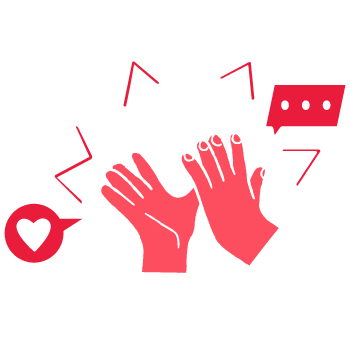The way organizations in Canada approach Human Resources is undergoing a digital transformation. From recruitment to employee training, storytelling plays a key role in conveying messages, building trust, and creating a connected workplace. Traditional methods like brochures, static slides, and text-heavy manuals often fail to leave a lasting impact. In contrast, 2D animations tell better stories especially in the dynamic HR landscape.
Why Storytelling Matters in HR Communication
At its core, HR is about people. Whether onboarding a new employee or sharing company policies, the challenge lies in making the message clear, engaging, and memorable. And that’s where storytelling becomes critical.
Great stories spark emotions, build empathy, and make information easier to digest. They’re far more effective than rigid, formal presentations. 2D animations tell better stories because they blend visuals, voiceovers, and motion into an experience that connects with viewers on multiple levels.
What Makes 2D Animation the Smart Choice?
2D animation isn’t just about cartoons. It’s a professional-grade tool that organizations in Canada are using to deliver concise, powerful messaging. It’s cost-effective, customizable, and highly versatile.
2D animations tell better stories than static content because they bring movement, tone, and visual clarity to concepts that might otherwise feel dull or confusing. Here’s why HR departments are choosing this smart medium:
1. Simplifying Complex Information: Whether it’s workplace safety guidelines or benefit structures, 2D animations break it down into digestible content.
2. Increasing Retention: Studies show that people remember information better when it’s presented with visuals. 2D animation enhances both retention and understanding.
3. Boosting Accessibility: With multilingual voiceovers, subtitles, and visual clarity, animations can reach diverse workforces across Canada’s multicultural landscape.
4. Time and Cost Efficiency: Compared to live-action videos, 2D animation is quicker to produce and easier to update when policies or processes change.
How 2D Animations Tell Better Stories in Different HR Functions
Let’s take a closer look at how this medium is being used across various HR tasks in Canadian companies.
Onboarding New Employees
Onboarding can be overwhelming. New hires are often flooded with policies, procedures, and paperwork. Rather than handing them a lengthy manual, HR teams now use 2D animation to create welcoming, easy-to-follow onboarding journeys.
Imagine a new employee watching a 90-second animation that visually outlines the first week’s goals, introduces team members, and shares the company mission all in a warm, human tone. 2D animations tell better stories because they offer a narrative that’s easier to connect with than a corporate slide deck.
Workplace Training and Compliance
Training modules can be dense and hard to follow. Compliance topics like harassment policies, cybersecurity, and diversity training often require sensitive and clear communication. 2D animations make it possible to present these topics with clarity, empathy, and professionalism.
In Canada, companies are also required to follow region-specific labor regulations. With animated modules, updates can be quickly added as laws evolve ensuring the content remains relevant.
Employee Engagement and Culture Building
Building a strong workplace culture involves more than hosting events it’s about ongoing communication. Canadian HR teams are using 2D animations to roll out wellness programs, promote mental health initiatives, and share employee success stories.
These narratives become more relatable when animated characters, voiceovers, and scenarios represent real employee experiences. Here again, 2D animations tell better stories by giving life and emotion to everyday office moments.
Why Canadian Companies Are Adopting 2D Animation for HR
Canada’s workforce is diverse, remote-friendly, and highly digital-savvy. These factors create the perfect environment for 2D animation to thrive in HR communications.
Multicultural Teams
With a workforce made up of employees from all over the world, communication in Canadian companies must be inclusive. 2D animations support multiple languages and help reduce misunderstandings, regardless of cultural background.
Remote and Hybrid Work Models
Post-pandemic, many Canadian companies have shifted to hybrid work environments. Training and onboarding now happen over Zoom and learning platforms. 2D animations are mobile-friendly, shareable, and perfect for asynchronous learning making them the go-to medium for remote HR.
Emphasis on Innovation
Canadian industries especially in tech, finance, and healthcare value innovation. By using animation in HR, companies not only streamline communication but also reflect their forward-thinking values.
Case Studies: How 2D Animations Tell Better Stories in Real Workplaces
Let’s highlight a few fictional but realistic Canadian HR scenarios where 2D animation made a significant difference.
Scenario 1: Simplifying Safety Training in a Manufacturing Firm
A Toronto-based manufacturing company needed a better way to train new warehouse workers on safety protocols. Traditional text manuals were not working. After introducing a 2D animated safety series covering everything from proper lifting techniques to emergency exits they saw a 40% increase in training test scores and a noticeable drop in workplace accidents.
Scenario 2: Onboarding Remote Developers in a Tech Startup
A Montreal SaaS startup began hiring remote engineers from across the country. They developed a series of short 2D animations to introduce the company’s culture, product architecture, and HR policies. The result? New hires reported higher engagement and a faster ramp-up time.
Scenario 3: Promoting Diversity and Inclusion in a Government Office
A provincial government office in British Columbia launched a diversity training campaign using 2D animation. The animated series used relatable characters and real-life scenarios to show the impact of unconscious bias. It was widely praised for its clarity and emotional resonance.
These examples reinforce the idea that 2D animations tell better stories because they simplify, humanize, and connect.
How to Create Effective 2D Animations for HR
For HR teams looking to get started, here are a few best practices for success.
Define the Core Message
Before creating any visuals, clarify what you want employees to learn or feel. The animation should serve a single, clear purpose.
Keep It Short and Focused
Aim for short videos (60–120 seconds). Break longer topics into a series to avoid overwhelming viewers.
Use a Friendly, Inclusive Tone
Whether through narration, visuals, or music, the tone should match your company culture and be welcoming to all employees.
Make It Accessible
Use subtitles, consider colorblind-friendly palettes, and test your animations across different devices.
Measure Engagement
Track completion rates, feedback, and knowledge retention to see how your animations are performing and where to improve.
By following these steps, companies can ensure their 2D animations are not just creative but truly effective in transforming HR storytelling.
Future of 2D Animation in HR Across Canada
Looking ahead, the integration of animation in HR practices is only expected to grow. As more tools become available and production becomes faster and more affordable, even small HR teams will be able to leverage animation.
We’ll likely see animations used in recruitment ads, DEI campaigns, employee recognition, and even real-time updates delivered through mobile apps.
The central advantage will remain unchanged: 2D animations tell better stories and that’s exactly what the HR industry needs to thrive in today’s workplace.
Conclusion
HR is no longer just about managing policies and processes it’s about creating human-centered experiences. And when it comes to engagement, clarity, and emotional impact, 2D animations tell better stories than nearly any other format.
From Canadian tech firms to government offices, HR departments are turning to animation to build stronger teams, educate with empathy, and communicate with purpose.
As we continue into a future of remote work, digital onboarding, and diverse teams, one thing is clear: the smartest HR strategies will include 2D animation not as a novelty but as a necessity.





